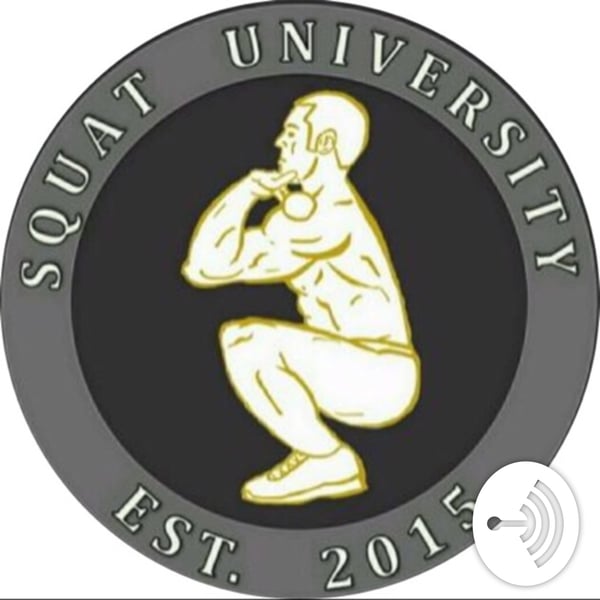Squat Anatomy 201 (Femur Length)
Squat University
Dr. Aaron Horschig
5 • 617 Ratings
🗓️ 1 July 2018
⏱️ 18 minutes
🧾️ Download transcript
Summary
In episode 17 of the podcast, Dr. Aaron Horschig dives into the topic of how femur length compared to torso length can change your squat mechanics. He then gives some practical take aways so you can find the best squat for your body!
Master squat technique: https://squatuniversity.com/book/
Subscribe to my YouTube channel here: https://tinyurl.com/y2eq7kpr
Visit the website: http://www.squatuniversity.com
Like the Facebook page: https://www.facebook.com/SquatUniversity
Follow on Twitter: https://twitter.com/squatuniversity
Follow on Instagram: http://instagram.com/squat_university
Transcript
Click on a timestamp to play from that location
| 0:00.0 | Class is in session. |
| 0:02.9 | You're listening to Squat University by Dr. Aaron Horshick. |
| 0:06.6 | Let's go! |
| 0:07.6 | Now, let's start the show. |
| 0:13.8 | Podcast listeners, thank you so much for checking out today's show. |
| 0:17.0 | This is episode 17 of the Squat University podcast. |
| 0:20.5 | The goal with each and every one of these shows is to bring you as much value-packed content to help you move better in the gym and in life, decrease your bodies, aches, and pains, and help you reach your true athletic potential. |
| 0:31.5 | Now, today we're going to talk again about your anatomy and how it affects your squat technique. |
| 0:36.8 | Specifically, I want to talk about the |
| 0:38.6 | lengths of your legs and the ratios of your femur and thigh bone and your torso, basically how that |
| 0:44.5 | relates to your squat. Now, a few weeks ago, we discussed the squat and how the anatomy of your |
| 0:49.8 | hips specifically can change your technique. So I guess the title of today's class will then be |
| 0:55.1 | squat anatomy 201. If you have not yet listened to that previous podcast, I think it was |
| 1:01.4 | episode 13, I would definitely recommend going back and listening to that. And it basically |
| 1:06.4 | we discussed how not everyone has this ideal textbook anatomy, especially when you come and look |
| 1:13.2 | at your hip joints. Specifically, your hip sockets, which is called your acetabulum, they can |
| 1:19.6 | open sometimes more forward or more angled or flat to the side. Your femurs, then, your |
| 1:25.1 | thigh bones, can have a greater angle forward or again |
| 1:28.6 | can connect your pelvis at a more flat angle. This is basically where we get the words ant |
| 1:34.3 | version or retroversion in terms of your hip socket anatomy. And basically both of these |
| 1:40.7 | anatomical differences can have drastic changes in how your body is required to move, |
| 1:47.8 | especially in movements like the squat or catching a clean or snatch or even deadlifting. |
... |
Please login to see the full transcript.
Disclaimer: The podcast and artwork embedded on this page are from Dr. Aaron Horschig, and are the property of its owner and not affiliated with or endorsed by Tapesearch.
Generated transcripts are the property of Dr. Aaron Horschig and are distributed freely under the Fair Use doctrine. Transcripts generated by Tapesearch are not guaranteed to be accurate.
Copyright © Tapesearch 2025.

